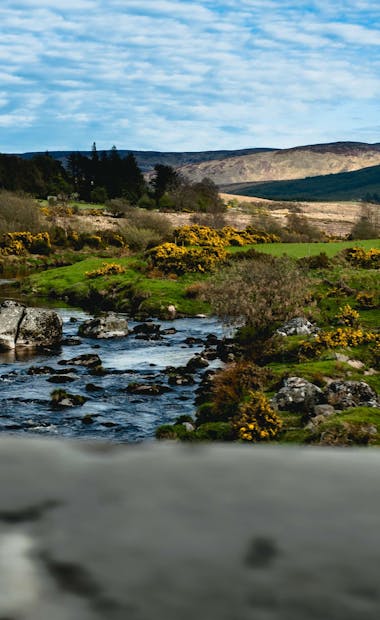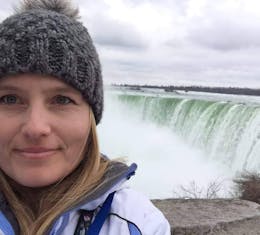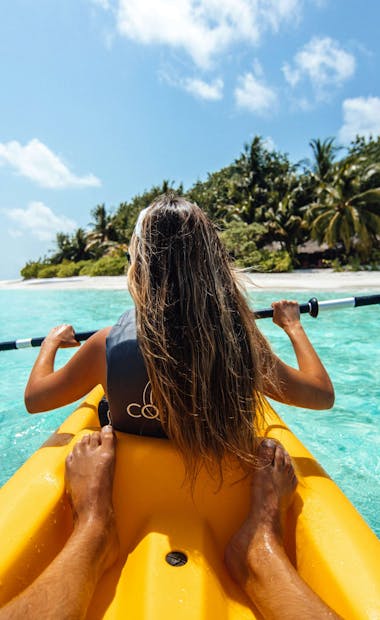
Walk The Wicklow Way Tours
Guided and Self Guided Walking
Walk The Wicklow Way
The Wicklow Way is a 131 km long distance hiking trail located in Ireland, stretching from the suburbs of Dublin to the foothills of the Wicklow Mountains. It is a popular destination for outdoor enthusiasts, offering stunning views of mountains, lakes, and forests along the way.
The trail is well-marked and accessible to hikers of all levels, making it a perfect adventure for both beginners and experienced trekkers. The Wicklow Way can be hiked in its entirety over 7-10 days, or shorter sections can be hiked as day hikes.
The trail passes through picturesque villages, historic ruins, and stunning landscapes, including Glendalough Valley, the Powerscourt Waterfall, and the Glenmalure Valley. The Wicklow Way is also home to a diverse range of flora and fauna, including wild deer, foxes, and birds of prey.
The best time to hike the Wicklow Way is from May to September when the weather is milder and the days are longer. However, hikers should still be prepared for changing weather conditions and bring appropriate gear for all weather.
Whether you are seeking an outdoor adventure or a peaceful escape in nature, the Wicklow Way is a must-see destination for any traveler to Ireland. With its breathtaking scenery, rich history, and diverse wildlife, it is a trail that is sure to leave a lasting impression.
What is the Wicklow Way?
The Wicklow Way is a long-distance walking trail in Ireland that runs from Marlay Park in south Dublin to Clonegal in County Carlow, covering a distance of approximately 130 kilometers (80 miles). The trail passes through some of the most spectacular scenery in Ireland, including the Wicklow Mountains, the Glencree Valley, and Glenmalure. It is Ireland's first and oldest waymarked long-distance walking trail, opened in 1980.
The Wicklow Way is a challenging trail that requires a moderate level of fitness and endurance. It traverses rugged terrain, including steep hills and rocky paths, and can be physically demanding. However, the trail also offers stunning views of valleys, lakes, and mountains, making it a popular destination for hikers and outdoor enthusiasts.
The trail is divided into five stages, each of which can be completed in a day, although some hikers choose to take longer to enjoy the scenery and explore the local area. The trail is well-marked with signposts and waymarkers, and there are a number of designated camping and accommodation spots along the way.
The Wicklow Way is a popular destination for hikers from around the world, drawn to its stunning scenery, challenging terrain, and rich history. Whether you're an experienced hiker looking for a new challenge, or a beginner looking to explore the great outdoors, the Wicklow Way offers an unforgettable experience.
When is the best time to walk the Wicklow Way?
The ideal time to trek the Wicklow Way is during the summer months of May to September when the weather is generally milder and drier. The days are also longer during this time, giving hikers more time to complete each day's hike and enjoy the beautiful scenery along the trail.
That being said, the weather in Ireland can be unpredictable, and hikers should still be prepared for changing conditions. Even during the summer months, there can be periods of rain and wind, so it's important to bring appropriate gear for all weather.
Additionally, hikers who prefer to avoid crowds may want to consider hiking the Wicklow Way during the shoulder seasons of April or October. While the weather may be slightly cooler and wetter, the trail will be quieter and less crowded, allowing for a more peaceful and immersive experience.
Ultimately, the best time to trek the Wicklow Way depends on individual preferences and goals. Hikers should consider factors such as weather, crowds, and personal schedules when planning their trip.
What is the altitude and undulation fo the Wicklow Way?
The Wicklow Way is a hiking trail located in the Wicklow Mountains of Ireland, and while it does cover some rugged terrain, it is not a particularly high-altitude trail. The highest point along the trail is the summit of Mullaghcleevaun, which stands at 849 meters (2,785 feet) above sea level.
In terms of undulation, the Wicklow Way is a hilly trail with many ups and downs, but it is not excessively steep or challenging for most hikers. The total elevation gain over the course of the trail is around 3,300 meters (10,800 feet), with several long climbs and descents.
Overall, the Wicklow Way is a moderate-level hiking trail that can be completed by most hikers with a reasonable level of fitness and experience. However, hikers should still be prepared for changing weather conditions and bring appropriate gear for all weather, as well as ensuring they are adequately trained and prepared for the terrain and length of the trail.
Is the Wicklow Way hard?
The Wicklow Way can be considered a moderately challenging trek, with a variety of terrain and elevation changes throughout the trail. It is approximately 130 km (80 miles) long and can take anywhere from 5-10 days to complete depending on your pace and itinerary. Some sections of the trail may be more challenging than others, particularly those with steep inclines or rocky terrain. It is recommended that you have a moderate level of fitness and experience with hiking before embarking on the Wicklow Way. Proper preparation, including appropriate gear and physical training, can help make the experience more enjoyable.
How fit do I need to be to walk the Wicklow Way?
To walk the Wicklow Way, you will need a moderate level of fitness. While the route is not overly strenuous, there are some steep climbs and descents, as well as sections with uneven terrain and loose rocks. It is recommended that you are comfortable walking 15-20 kilometers per day and are able to carry a backpack with your personal items and water for the day. If you are not used to walking long distances, it is advisable to start training a few weeks before your trip to build up your stamina and endurance.
Can children walk the Wicklow Way?
Children can walk the Wicklow Way, but it is important to consider their age, fitness level, and experience with hiking before embarking on the trail.
The Wicklow Way covers a distance of 131 kilometers (81 miles) and takes most hikers 5-7 days to complete. It involves some steep climbs and descents, rocky terrain, and can be challenging in parts, particularly in adverse weather conditions. Therefore, it is recommended that children be at least 12 years old and have some experience with hiking and camping before attempting the trail.
Parents should also ensure that their children are properly equipped with appropriate gear, including sturdy footwear, waterproof clothing, and warm layers. Additionally, parents should be mindful of their children's endurance levels, and plan the itinerary accordingly, taking into consideration shorter walking distances and more frequent rest breaks.
Overall, with careful planning and consideration, the Wicklow Way can be a great adventure for families with children who enjoy the outdoors and have some hiking experience.
Where is the Wicklow Way?
The Wicklow Way is located in the eastern part of Ireland, in the county of Wicklow. The trail runs from Marlay Park, which is located in the suburbs of Dublin, south through the Wicklow Mountains and finishes in Clonegal, a village in County Carlow.
The Wicklow Mountains are a popular hiking and outdoor recreation destination, known for their stunning scenery and diverse wildlife. The Wicklow Way offers hikers the opportunity to experience the beauty and ruggedness of this region, as well as the history and culture of the surrounding towns and villages.
Where should we stay?
There are several accommodation options available for hikers who wish to walk the Wicklow Way. The trail passes through a number of small towns and villages, and there are also many accommodation providers in the surrounding areas.
Some hikers choose to stay in traditional bed and breakfasts or guesthouses located in the towns and villages along the trail, while others prefer to camp or stay in hostels or mountain huts along the way. There are also several hotels and lodges located near the trail that offer more luxurious accommodation options.
The most popular towns to stay in along the Wicklow Way include Dublin (for the start of the trail), Enniskerry, Roundwood, Glendalough, Laragh, Glenmalure, and Clonegal (for the end of the trail). Hikers should plan their accommodation in advance to ensure availability, especially during peak hiking season (May to September).
Ultimately, the choice of where to stay will depend on the individual hiker's preferences, budget, and itinerary.
What is the history of the Wicklow Way?
The history of the Wicklow Way is intertwined with the history of the Wicklow Mountains themselves, which have been inhabited by humans for thousands of years.
The mountains have a rich archaeological heritage, with numerous burial sites, stone circles, and megalithic tombs scattered throughout the area. The ancient people of Wicklow left their mark on the landscape, and their legacy can be seen in the many standing stones and other ancient monuments that still dot the hillsides.
In more recent times, the Wicklow Mountains were a refuge for Irish rebels and guerrilla fighters during the 18th and 19th centuries. During the 1798 Rebellion, the mountains were the site of many battles between Irish rebels and British forces, and the rugged terrain provided an ideal base for guerrilla warfare.
The idea for the Wicklow Way as a hiking trail was first proposed in the 1960s by J.B. Malone, an Irish writer and outdoor enthusiast. Malone was inspired by the Appalachian Trail in the United States, and saw the potential for a long-distance hiking trail in the Wicklow Mountains. In 1980, the trail was officially opened as Ireland's first long-distance walking trail, running from Marlay Park in Dublin to Clonegal in County Carlow.
Since then, the Wicklow Way has become a popular destination for hikers from around the world, drawn to its stunning scenery, challenging terrain, and rich history. Today, the trail is maintained by a dedicated group of volunteers, who work to keep the trail in good condition and preserve its unique character for future generations.
Why is the Wicklow Way famous?
The Wicklow Way is famous for a few reasons:
It was the first long-distance walking trail in Ireland, opening in 1980, and has since become a model for other long-distance trails throughout the country.
The trail covers some of the most spectacular scenery in Ireland, traversing the Wicklow Mountains and offering stunning views of valleys, lakes, and rugged hillsides.
The Wicklow Way is a challenging hike, requiring a moderate level of fitness and endurance, making it a popular destination for experienced hikers looking for a new challenge.
The trail is steeped in history, with ancient burial sites, stone circles, and megalithic tombs scattered throughout the area, as well as a rich tradition of Irish rebellion and guerrilla warfare in the 18th and 19th centuries.
The Wicklow Way is accessible from Dublin, Ireland's capital city, making it a popular destination for both domestic and international tourists.
Overall, the combination of stunning scenery, challenging terrain, and rich history make the Wicklow Way a must-visit destination for hikers and outdoor enthusiasts visiting Ireland.
What is the packing list for the Wicklow Way?
If you are planning to trek the Wicklow Way, here is a general packing list that you may find helpful:
Clothing: Lightweight, quick-drying, and moisture-wicking clothing is ideal for the Wicklow Way. Be sure to pack several changes of clothing, including comfortable hiking pants, moisture-wicking tops, and waterproof and windproof jackets and trousers. Bring extra layers for cooler weather, including warm hats, gloves, and thermal underwear.
Footwear: Sturdy, waterproof hiking boots are essential for the Wicklow Way. Be sure to break in your boots before the trek to avoid blisters. Bring extra pairs of socks, preferably made of moisture-wicking materials.
Backpack: A lightweight backpack with good support is necessary to carry your gear. A backpack with a capacity of 30-40 litres is sufficient for the Wicklow Way.
Sleeping bag: If you plan to camp along the trail, bring a lightweight and compact sleeping bag.
Tent: If you plan to camp along the trail, bring a lightweight and easy-to-assemble tent.
Food and water: Bring plenty of water, as well as high-energy snacks and meals. There are few facilities along the trail, so it's important to bring enough food and water to last the entire trek.
Navigation tools: A map and compass are essential for navigating the trail. Alternatively, you can use a GPS device or a smartphone with offline maps.
First-aid kit: Be sure to pack a small first-aid kit with essential items like adhesive bandages, pain relievers, and antiseptic wipes.
Sun protection: Bring sunscreen, sunglasses, and a hat to protect yourself from the sun's harmful rays.
Other essentials: A headlamp, a multi-tool or Swiss Army knife, insect repellent, and a whistle are all useful items to bring on the Wicklow Way.
Remember to pack as lightly as possible to avoid unnecessary strain on your body while trekking. Consider your personal needs and preferences when deciding what to pack for the Wicklow Way.
Is there any wildlife to see along the Wicklow Way?
Yes, there is wildlife to see on the Wicklow Way. The trail passes through some of the most beautiful natural landscapes in Ireland, including woodlands, hills, and mountains, where you can spot a variety of wildlife.
Some of the common wildlife you may see while trekking the Wicklow Way include:
Red deer: The Wicklow Mountains are home to a large population of red deer, which are the largest wild animals in Ireland.
Birds of prey: You may see birds of prey such as kestrels, sparrowhawks, and peregrine falcons soaring overhead.
Irish hare: The Irish hare is a native species to Ireland, and you may spot them on the trail in the early morning or late afternoon.
Badgers: Badgers are nocturnal animals, but you may see them foraging for food at dusk or dawn.
Otters: The river valleys along the Wicklow Way are home to otters, which can be seen swimming or fishing in the streams.
Reptiles: Ireland has only a few species of reptiles, including common lizard, slow worm, and common frog, which you may see while trekking.
While spotting wildlife on the Wicklow Way can be exciting, it's important to remember to keep a safe distance and not disturb or harm the animals.
Are there any cafes and restrooms along the wicklow way trail?
Yes, there are cafes and toilets along the Wicklow Way, although they may not be available at every section of the trail.
There are several villages and towns along the way that have cafes, restaurants, and pubs where you can stop for a meal or a hot drink. Some popular stops for refreshments include Enniskerry, Roundwood, and Glenmalure.
As for toilets, you'll find public restrooms at some of the larger towns and villages, but it's a good idea to bring some toilet paper and hand sanitizer with you on your trek, just in case.
It's also worth noting that the Wicklow Way passes through many areas of natural beauty and remote wilderness, where there may not be any facilities nearby. It's a good idea to plan your route ahead of time and carry enough water and snacks to keep you fueled and hydrated throughout the day.
Are there any other trails like the Wicklow Way?
Yes, there are several other trails in Ireland that are similar to the Wicklow Way in terms of length, difficulty level, and scenic beauty. Here are a few examples:
The Dingle Way: This 179 km (111 mile) trail takes you through the rugged and beautiful landscape of the Dingle Peninsula in County Kerry. The route takes in a variety of terrain, including mountains, beaches, and coastal cliffs.
The Kerry Way: This 214 km (133 mile) trail is another long-distance hiking route in County Kerry. It passes through the remote and wild countryside of the Iveragh Peninsula, with views of the Atlantic Ocean and Ireland's highest peaks.
The Beara Way: This 196 km (122 mile) trail takes you through the stunning scenery of the Beara Peninsula in County Cork and County Kerry. Along the way, you'll encounter ancient ruins, rugged coastline, and sweeping mountain views.
The Burren Way: This 123 km (76 mile) trail takes you through the unique and fascinating landscape of the Burren region in County Clare. The route passes through limestone pavements, ancient tombs, and medieval castles, with stunning views of the Atlantic coastline.
The Sheep's Head Way: This 88 km (55 mile) trail takes you along the rugged and picturesque Sheep's Head Peninsula in West Cork. The route offers stunning coastal views, as well as opportunities to see local wildlife such as seals, dolphins, and whales.
These are just a few examples of the many hiking trails available in Ireland. Each route has its own unique character and challenges, and all offer the chance to experience Ireland's natural beauty up close.
Book With Confidence
Monthly Payments
Spread the costs with no interest or additional fees
Best Price Guarantee
We won't be beaten on price. If you find this adventure at a lower price please get in touch!
Reserve now & pay later
Reserve your adventure today and pay later, free of charge
ATOL protected
Book with confidence
Hold your space today, for free
or book your trip with a deposit and then pay the rest in instalments.
Reserve your flights with us
Add flights to your booking and we'll take care of the rest. You'll get 24/7 support from our team & ATOL protection.
Speak to our experts
Call or email our expert team to find out more and help with ideas and planning.







